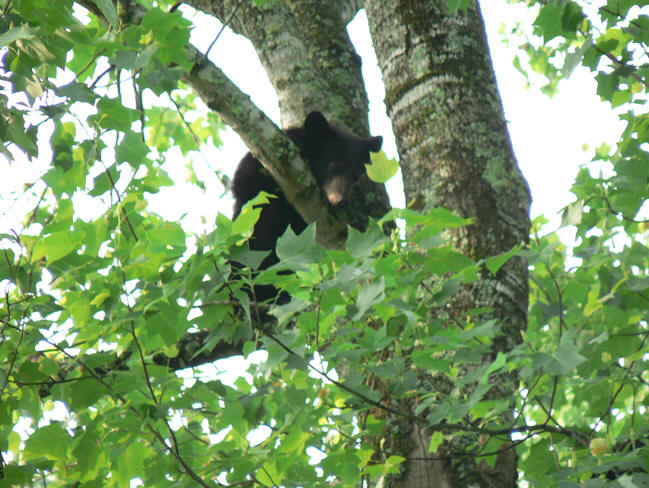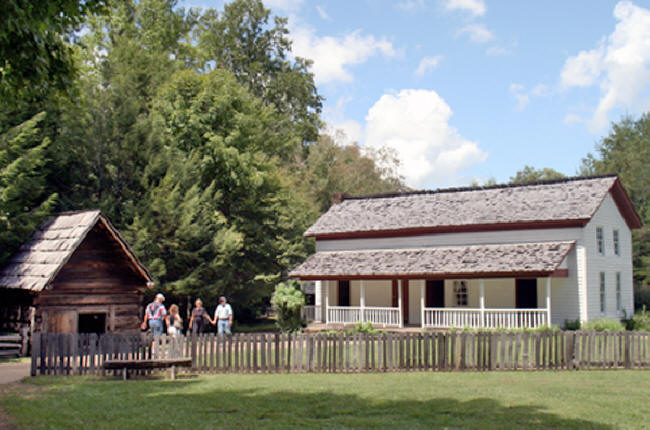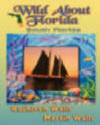Cades Cove
|
 |
|---|
| Visitors from all over come to Cades Cove. |
Nestled in the northwest corner of the great Smoky Mountains National Park, is a tiny treasure trove of Americana. Here, the heritage carved by the early settlers of this pastoral valley is preserved. Rustic log cabins still echo with the soft whispers of Elizabethan English. The mills and barns recall a time when man and nature were bound in an ongoing ritual. Their houses of worship still ring with the strains of joyous hymns from the past. On this eleven mile loop road you cover a span of a century in the lives of Cades Cove residents but the historic buildings are only a part of the Cades Cove experience. Hiking the area is an adventure not soon forgotten. You are almost certain to encounter a bear or deer. You may also get a glimpse of some of the cove's other wild residents. wild hogs, woodchucks, river otters, skunks, raccoon, bobcat, gray or red fox and chipmunk also call it home. Coyotes have moved into the Smokies and can be seen most often at dusk

This fellow caused a major "bear jam" as he wondered along the road. He finally crossed
right in front of my car.
.jpg)
This deer was grazing in front of one of the churches and I stayed around all the while
I changed to a short lens.
In our increasingly technological society, that glimpse into an earlier rural culture combined with wild life roaming free, is becoming more popular than any other spot in the park.
 |
|---|
| Cabin earliest settlers, John and Luraney Oliver, built for their son around 1850. |
Over two million people visit the cove each year. They are drawn by the overpowering natural beauty, the plentiful wildlife and a chance to step into another culture, another time. Cades Cove is not a museum in the sense of something built for that purpose. It is the preserved remnants of the culture that flourished there from 1820 until the park began acquired the land in 1934.
Before the 1820s, the lush valley was disturbed only by wandering bands of Cherokees. Their old trails crisscross the land, coming down from the mountains and arising on the other side. Remains of some trails still exist in the existing roads and trails. They hunted the bear, bison, elk and deer that roamed the valley's lush forest and grasslands.
The earliest settlers came into the valley from Tennessee, Virginia and North Carolina. The Olivers built the earliest remaining structure in the cove. The one room log cabin with a porch and loft was home. What it lacked in modern comforts, it amply made up for with the sweeping view of mountains and forest. The chinked logs were filled with a red clay
The settlers were religious people. Two of their earliest buildings were churches. The Primitive Baptist Church was erected in 1827. The earlier log building was replaced in 1887 by the one you see there today. The plain frame structure is unpainted inside and reflects the worshiper's simple utilitarian values. John Oliver and his wife, Lorena Frasier Oliver, lie in the cemetery behind the church along with many other early settlers. You can't help but note the abundance of infant graves and the small stones that testify to a parent's grief. Another tombstone refers to a parishioner who was "murdered by North Carolina Rebels." This reflects the strife within the church caused by the Civil War. The church was shut down because of different factions in the area. Official church correspondence explains the closing: "It was on account of the Rebellion and we was Union people and the Rebels was too strong here in Cades Cove. Our preacher was obliged to leave..."
|
|
|---|
| Cabin at Cades Cove |
The residents came from all over. Like William Tipton, nicknamed "Fighting Billy" who migrated from Virginia. He fought in the Revolutionary War and was the son of a prominent veteran, Col. John Tipton. He was given a land grant in Cades Cove and was a miller and forge owner. he sold portions of his tract to relatives who also moved to Cades Cove.
Like any community, Cades Cove had its share of misfortune and sad stories. In the 1880s, Matilda Shields Gregory's husband deserted his wife and young son. Her brothers built her a tiny log cabin. The larger cabin in front tells the rest of the story. Henry Whitehead, a widower with three daughters, courted and married Matilda. He built a squared log home for them. The house looks like a frame house at first glance but closer investigation reveals four inch square sawed logs built in the log style. There were once three such "transition" houses but this is the only one left standing. Notice the innovative brick chimney on the larger house. These two buildings represent the roughest and the finest of the log homes in the cove.
We visited recently and were rewarded with a bear sighting and numerous deer. We even saw a coyote crossing the road just before we entered the cove. There is always something new going on in Cades Cove.
 |
|---|
| Cable Mill |
The heart of Cades Cove is the Cable Mill Area. In the days before electricity, the most common power sources was the water wheel which drove the early grist mills. Cable Mill is still a workable mill. It is open from mid-April through October, with a costumed ranger in attendance to explain to you how the mill works. You can buy meal that was ground between these ancient stones.
The Cantilever barn, a design in which the upper story was larger than its base, is interesting. This design allowed animals which were normally outside to gain shelter from the weather. it showed the ingenuity as well as the sophisticated workmanship of the settlers.
 |
|---|
| Gregg-Cable House |
One of the nicest homes in the cove is located here. the Gregg-Cable house was built in 1879 by Leason Gregg on a one acre tract he purchased from John Cable. This house was the first frame house built in Cades Cove and was not only a residence but as a general store. The Gregg's family operated the store in the downstairs while living in the upper floors, a common custom brought to America from Europe. Eventually John Cable's daughter, Rebecca, and his son, Dan, bought land and house back. Together they and Dan's family ran the store. Eight years later, they changed it to a boarding house. After Dan and his wife died, Becky Cable continued to care for her nieces and nephew and ran the business on her own. Becky was one of the last residents of the cove died in her home in 1940 well into her nineties.
|
|
|---|
| Ranger Yvonne Peychal explains the difference in animal pelts. |
Another attraction about the mill area is the educational displays. sometimes the sorghum mill is operating. Sometimes other activities that shed light on what life was like in the 19th century for residents of the mountains. This time, Ranger Yvonne Peychal had a table set up with pelts of many of the wildlife. You could actually feel the difference between the fur of a coyote and that of a wolf or fox.
There is a visitor center and rest rooms here too. This is of great importance as these are the only facilities in Cades Cove
If you visit the cove on the first weekend in May when neighboring Townsend is holding its Spring Festival and Old Timers Day, you are apt to find folks dressed in period costume roaming around.
Cades Cove is the largest open air living museum in the Great Smokey Mountains National Park. It is a fitting tribute to those rugged pioneers who carved a life out of what was then one of the most isolated and beautiful spots on earth.
For more info: www.nps.gov/grsm/planyourvisit/ cadescove .htm































